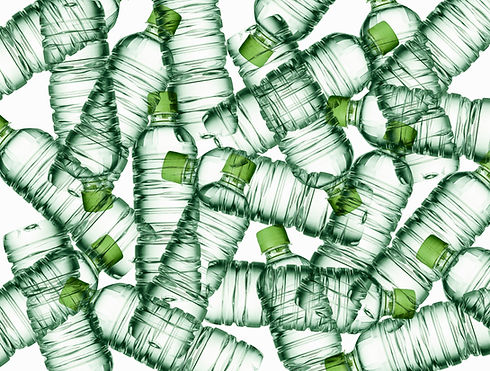

path to green innovation
MISSION
Empowering sustainable construction through informed choices, our mission is to guide individuals toward eco-friendly building materials. By highlighting the advantages and disadvantages of diverse options, we aim to inspire environmentally conscious decisions. Send us a request and we'll provide direct connections to a network of trusted suppliers and manufacturers, facilitating seamless access to sustainable materials and promoting a balance between innovation, functionality, and environmental responsibility in the construction industry.

eco-friendly building materials
There are various Eco-friendly building materials available that contribute to sustainable construction practices by reducing environmental impact.
Using a combination of Eco-friendly building materials can contribute to creating more sustainable and environmentally conscious structures. Keep in mind that the availability of these materials may vary depending on your location and local regulations.
Here below we've listed some commonly used Eco-friendly building materials:
HEMPCRETE
Hempcrete is a mixture of hemp fibers, lime, and water used as a building material. It is lightweight, breathable, and has excellent insulation properties.
-
Advantages: Renewable, lightweight, good insulation, fire resistant, durable, carbon-negative over time, regulates humidity, resistant to pests.
-
Disadvantages: Limited load-bearing capacity, longer curing times if prepared on site.


BAMBOO
Bamboo is a rapidly renewable resource that can be used for flooring, furniture, and even as a structural material.
-
Advantages: High tensile strength, carbon sequestration, promotes biodiversity when cultivated responsibly, rapidly renewable, versatile for various applications.
-
Disadvantages: May require protective treatments, sourcing concerns if not managed sustainably.
RECYCLED STEEL
Using recycled steel reduces the demand for new steel production and minimizes waste.
-
Advantages: High durability, can be recycled indefinitely, reduces mining impact, reduces demand for new steel, minimizes waste.
-
Disadvantages: Energy-intensive recycling process, potential for corrosion.


RECYCLED PLASTIC
Recycled plastic can be used for various construction purposes, such as decking, roofing, and insulation.
-
Advantages: Lightweight, resistant to moisture and chemicals, reduces plastic pollution, reduces plastic waste, versatile applications.
-
Disadvantages: Durability concerns, potential for toxicity.
RECYCLED GLASS
Recycled glass can be used in countertops, tiles, and insulation materials.
-
Advantages: Non-toxic, resistant to mold and mildew, reflective properties enhance natural light, utilizes recycled materials, aesthetically appealing.
-
Disadvantages: Energy-intensive manufacturing, limited structural applications.


RECLAIMED WOOD
Salvaged or reclaimed wood from old buildings, pallets, or other sources can be repurposed for flooring, furniture, and structural elements.
-
Advantages: Unique character and history, carbon sequestration, reduced demand for new timber, repurposes existing material, unique aesthetics.
-
Disadvantages: Quality variations, potential for pests or decay.
STRAW BALES
Straw bales can be used as a natural and renewable building material for walls, providing excellent insulation.
-
Advantages: High insulation value, cost effective, renewable resource, promotes sustainable farming practices.
-
Disadvantages: Vulnerability to moisture, fire concerns without proper treatment.


NATURAL STONE
Locally sourced and minimally processed natural stones, such as granite or slate, are environmentally friendly choices.
-
Advantages: Low maintenance, long lifespan, recyclable, locally sourced, aesthetically pleasing.
-
Disadvantages: Energy-intensive extraction, limited design flexibility.
AIRCRETE
Aircrete, or autoclaved aerated concrete (AAC), is a lightweight and eco-friendly building material composed of sand, cement and lime. Through a curing process in an autoclave, it gains high porosity, making it light and well-insulated.
-
Advantages: Lightweight, energy-efficient, good insulation, fire-resistant, sound-insulating properties, can be easily cut and shaped during construction.
-
Disadvantages: Initial cost, limited load-bearing capacity, not suitable for all applications.


FLY ASH
These bricks are made from industrial waste, specifically fly ash, a byproduct of coal combustion. Using fly ash reduces the demand for traditional clay bricks.
-
Advantages: Utilizes industrial waste, high compressive strength, reduces demand for clay, minimizes air pollution.
-
Disadvantages: Environmental concerns associated with coal combustion.
solar tiles
These tiles serve a dual purpose by functioning as roofing materials while also generating solar energy.
-
Advantages: Dual functionality, renewable energy generation, low operating costs, reduces reliance on traditional energy sources, potential for government incentives.
-
Disadvantages: Initial cost, efficiency variations, limited design options.


VCO-FREE PAINT
Volatile Organic Compounds (VOCs) are harmful chemicals often found in conventional paints. Low VOC or VOC-free paints are more environmentally friendly.
-
Advantages: Reduces indoor air pollution, eco-friendly, reduces health risks, contributes to a healthier living environment.
-
Disadvantages: Higher cost, limited color choices.
Sheep's Wool
Wool insulation is a renewable and biodegradable material with excellent insulation properties.
-
Advantages: Renewable, biodegradable, excellent insulation, fire-resistant, naturally regulates moisture, recyclable.
-
Disadvantages: Cost, potential for pests, limited structural use.


Rammed Earth
This construction technique involves compacting natural raw materials like earth, chalk, lime, or gravel to form walls. It's a low-energy and low-environmental-impact method.
-
Advantages: Low energy consumption, excellent thermal mass, low maintenance, locally-sourced raw materials.
-
Disadvantages: Limited design flexibility, vulnerability to water damage.
RECYCLED METAL
This construction technique involves compacting natural raw materials like earth, chalk, lime, or gravel to form walls. It's a low-energy and low-environmental-impact method.
-
Advantages: Corrosion-resistant, retains structural integrity, versatile design options, reduces demand for new metal.
-
Disadvantages: Energy-intensive recycling, potential for corrosion.

GET INVOLVED

PARTNERSHIP
Forge a strategic alliance with us to elevate your eco-friendly brand, sustainable products, or services. Together, we'll lead initiatives that not only drive sustainability but also enhance your brand's reputation and market presence. Join forces with us to champion a more environmentally and responsible future, leaving a legacy for generations to come.

SUSTAINABLE EXPO
There are two ways you can Exhibit your products or services with us;
-
at our upcoming Expo Events.
-
at our permanent NeighborGreens Village.
Click here to learn all about it or click "Signup as Exhibitor" to gain exclusive access to our portal and priority on space location for your business.






